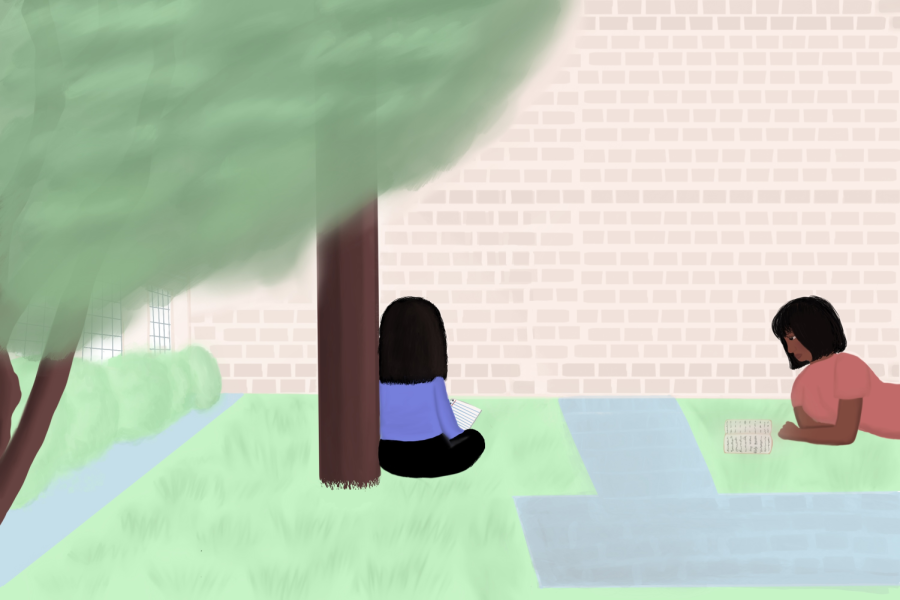Study smarter in sunny spaces
March 21, 2023
The average UT student confuses fluorescent lights with rays of sunshine while drudging through their textbooks come crunch time. Students regularly lose time, light and hope in the Perry Castañeda Library. Students must choose between the dingy, pale walls of the infamous library and the unpredictable Texas weather.
UT’s campus is beautiful, but there’s room for improvement. Campus leaders should create spaces that welcome students with color, sunlight and a sense of community for Longhorns.
As a kid, my mother told me to go outside and “taste the sun.” However, most Americans spend over 90% of their days inside. The adverse effects of Vitamin D deficiency include fatigue, muscle weakness, depression, loss of appetite and a weakened immune system.
Meanwhile, those who get a daily dose of sunlight receive enough Vitamin D to prevent these issues. Access to natural lighting in buildings also has tangible effects on emotional-subjective well-being (E-SWB). Aside from health and happiness, studies also show that natural lighting positively correlates with increased academic performance.
Professor Larry Speck, the W. L. Moody professor of Architecture at UT and the former UT Austin School of Architecture dean, believes that revitalizing student spaces benefits their needs.
“The key on [renovating spaces] is to hire a really good designer,” Speck said.”It’s something people got to understand about college students, understand about assignments they’re giving, understand (that) it’s not just redecorating. It’s fundamentally redesigning to fit the needs.”
Students’ needs and study habits have dramatically changed since the construction of buildings like the PCL in the 1970s. The college culture has shifted from “sit down, shut up and work” to fostering innovative thought.
Including natural sunlight in our study spaces is easy to achieve and offers abundant benefits to students. Some good examples on campus are RLP, EER and the Life Science Library in the main building. These environments are critical for students studying a lot, especially around midterms and finals.
It is no coincidence that yellow is a color that encourages positive feelings as it relates to sunlight. In 2014, a group of researchers even evaluated a college campus for the impact of colors on students. In the report, the researchers found that students were passionate about red, blue and yellow hues, which created an airy and productive environment.
Balancing the use of bright colors, which can hinder productivity, with cool colors, which improve performance, is imperative.
Professor Thomas Mellins, a renowned architectural historian and lecturer at Columbia University, UT and the Parsons School of Design, has studied diverse design techniques in New York City.
“[Architectural] Elements … can serve more than one purpose. A variety of different types of spaces can be conducive to different types of activities,” Mellins said.
Mellins argues that these changes do not have to be as extensive as constructing new buildings or thoroughly undertaking renovations like the Julliard School project or the Columbia campus extension. Instead, Mellins offers the idea that through small additions like intentional coloring, emphasis on sunlight can repurpose or even salvage some campus buildings.
The perfect example of UT’s renovation efforts is Rudolph Hall, the Art and Architecture Building at Yale University. Yale transformed Rudolph Hall, also known as the A&A Building, from a bleak experience into a creative and productive space by raising a capital fund for the project. With a blueprint already laid out, UT is fully equipped to give its outdated buildings an intentional makeover.
Dylan Woollard is a finance sophomore from Austin, Texas.














